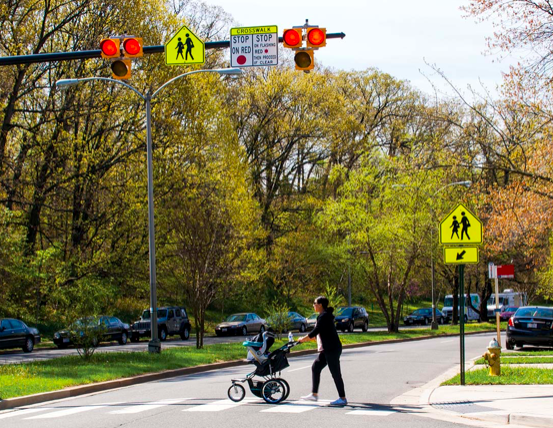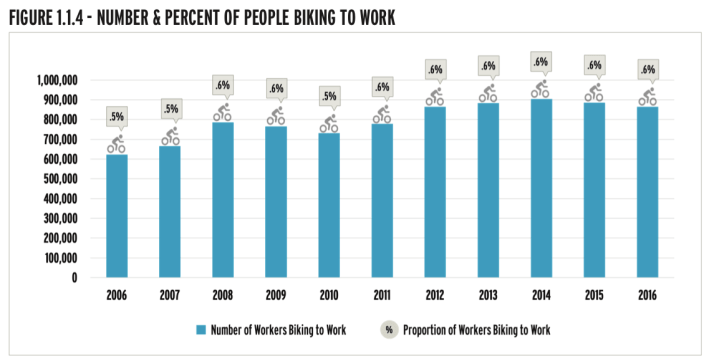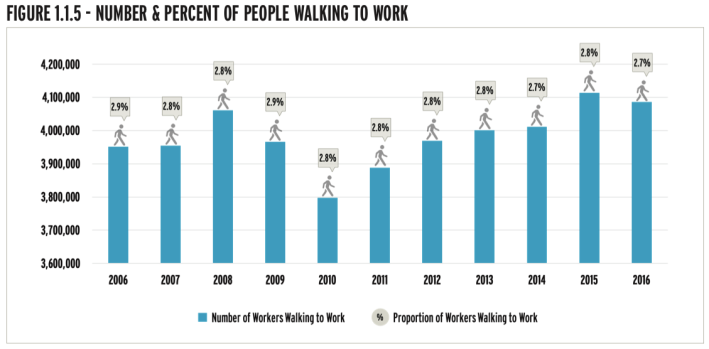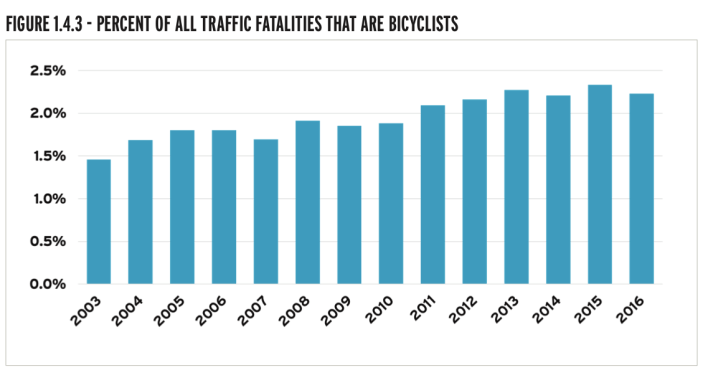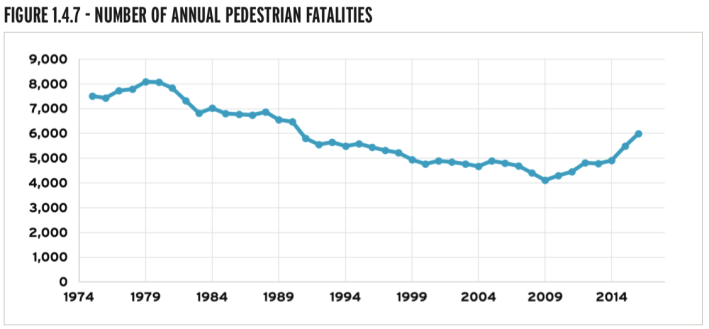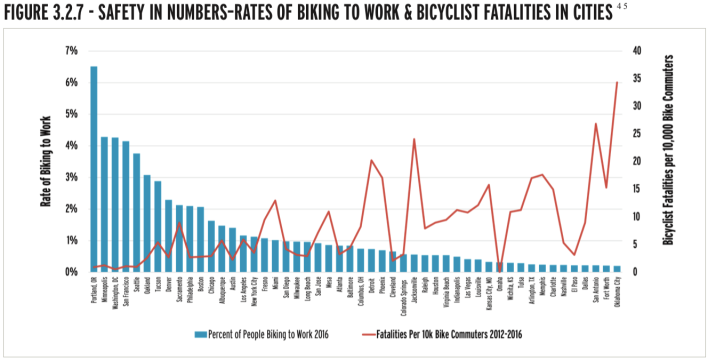Pedestrian fatalities are soaring and bike commuting is leveling off nationally, despite progress in some cities and states — the latest evidence that we need leadership willing to do what works and willing to stop doing what doesn't, a new report reveals.
“The way we’re investing in infrastructure isn’t working,” said Ken McLeod, policy director with the League of American Bicyclists, and lead author of the group's semi-annual "Benchmarking" report. “There is a crisis in traffic safety and we have the tools to reduce the number of bicyclists and pedestrians killed on our roads every year. We need leaders at the national and state levels to take action: adopt Complete Streets policies, draft and implement bike and pedestrian master plans, and build protected infrastructure.”
Despite the progress in some cities and states, the overall national picture is mixed. Here are some of the top-line take-aways:
Biking and walking have leveled off
A decade ago, it seemed biking was on a steady upward trajectory. And it has increased substantially — about 20 percent — on the national level. But lately it seems to have hit a ceiling.
Biking to work has held mostly steady since 2013, Meanwhile, biking for other activities has been unchanged, according to the National Household Travel Survey, Bike League reports.
Walking to work has grown meanwhile, but it mostly seems to be a function of more people working compared to recessionary years.
They're getting more dangerous
Meanwhile, transportation authorities have been failing to keep bicyclists and pedestrians safe.
Since the Bike League began compiling this report in 2012, bike fatalities have increased 15 percent and pedestrian fatalities have increased 16 percent (using three-year rolling averages). There were more pedestrians deaths in 2016 that at any time in the last 25 years.
Bicyclist deaths are mainly an urban phenomenon with 71 percent occurring in urban areas. Meanwhile, a tiny segment of streets — arterial roadways — accounted for 61 percent of bike deaths in 2016. That's despite the fact that these roadways make up only about 10 percent of the nation's total.
Cities and states need complete streets policies and they need to follow through on them, the Bike League says. That is especially important on urban arterials — higher traffic collector roadways with a mix of commercial and residential development.
Funding has stabilized
The number of new biking and walking projects being started and the total funding levels have fallen since the end of the last decade, when Obama passed his stimulus bill.
The most recent transportation bill, the FAST Act, passed in 2015, was a step backward in many ways on pedestrian and bike funding. It allowed state agencies to transfer to small pool of money — about $800 million a year, or 2 percent of federal surface transportation funding — to highways and other projects.
The per-capita spending on biking and walking has nearly doubled since 2007, but it's still less than $3 per person per year. That's about half what England spends per capita and just one-tenth of what the Netherlands spends.
Many cities are investing. But states and feds have to step up
A number of cities and a few states have made significant progress in increasing biking and walking and improving safety since the Bike League started keeping track in 2012. For example, Oregon — a safety standout — had decreased cycling fatalities 30 percent since 2010, while increasing bike commuters 46 percent.
Unfortunately, investment has been uneven. Many of the safest places for biking and walking are getting safer — like Washington state and Massachusetts — are getting safer. But the places with the lowest levels of walking and biking — Mississippi and Alabama — are getting worse.
Of all new bike commuters since 2010, 44 percent came from growth in just the 10 highest-cycling cities.
As you can see in the below graph, the places with the highest number of bicyclists and pedestrians tend to be the safest as well, an example of the "virtuous cycle" of sustainable transportation.
